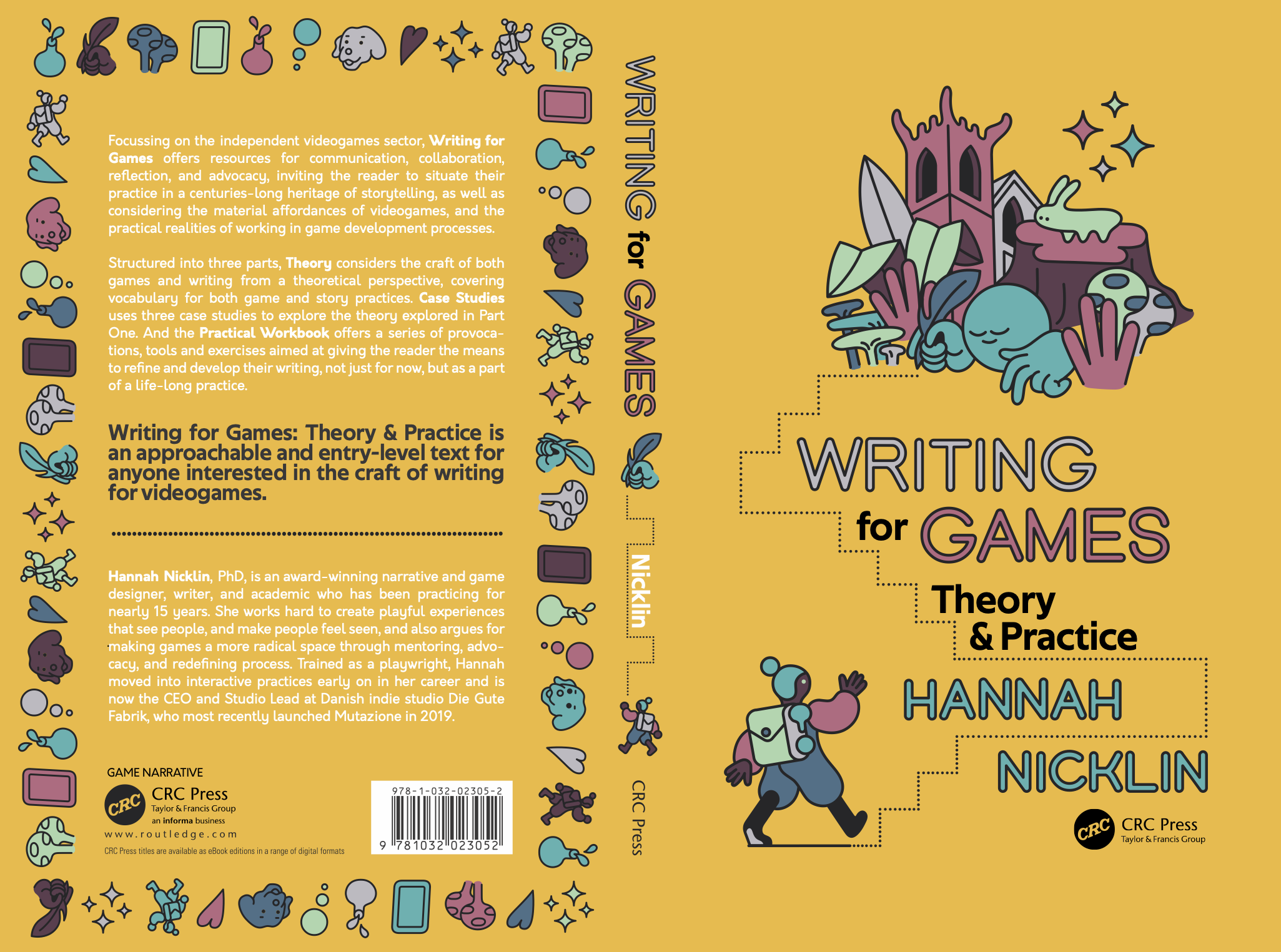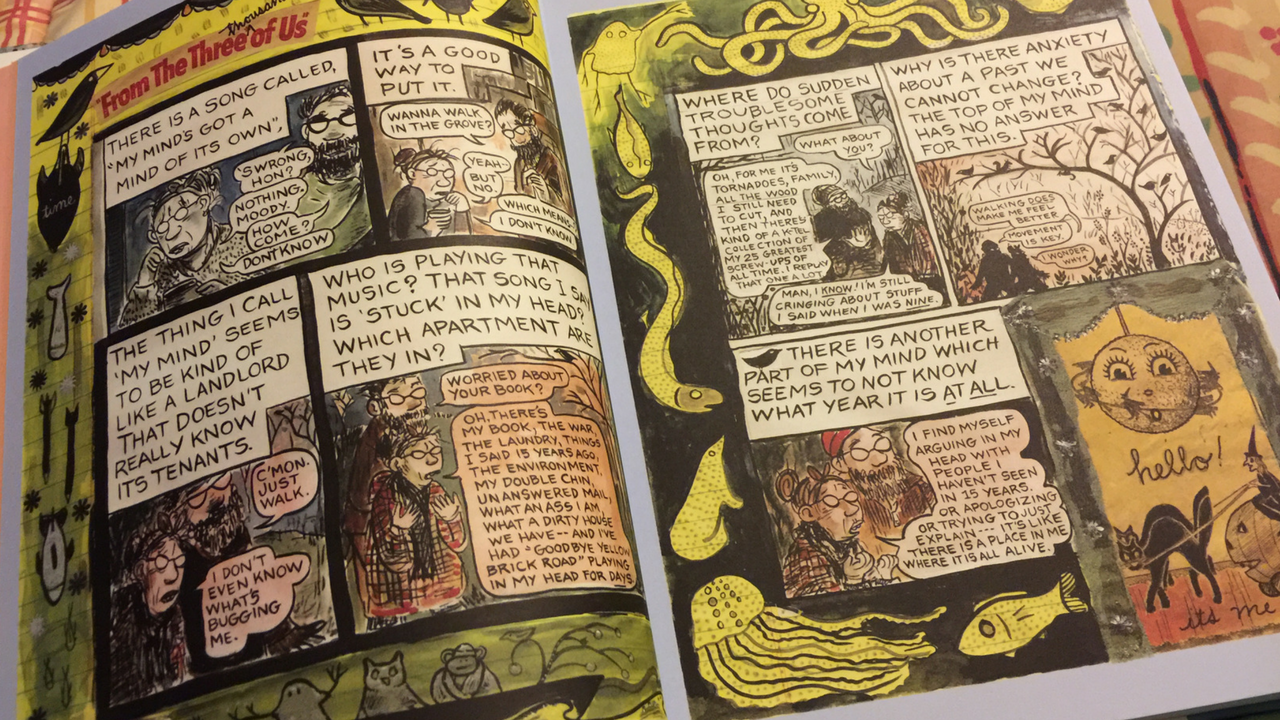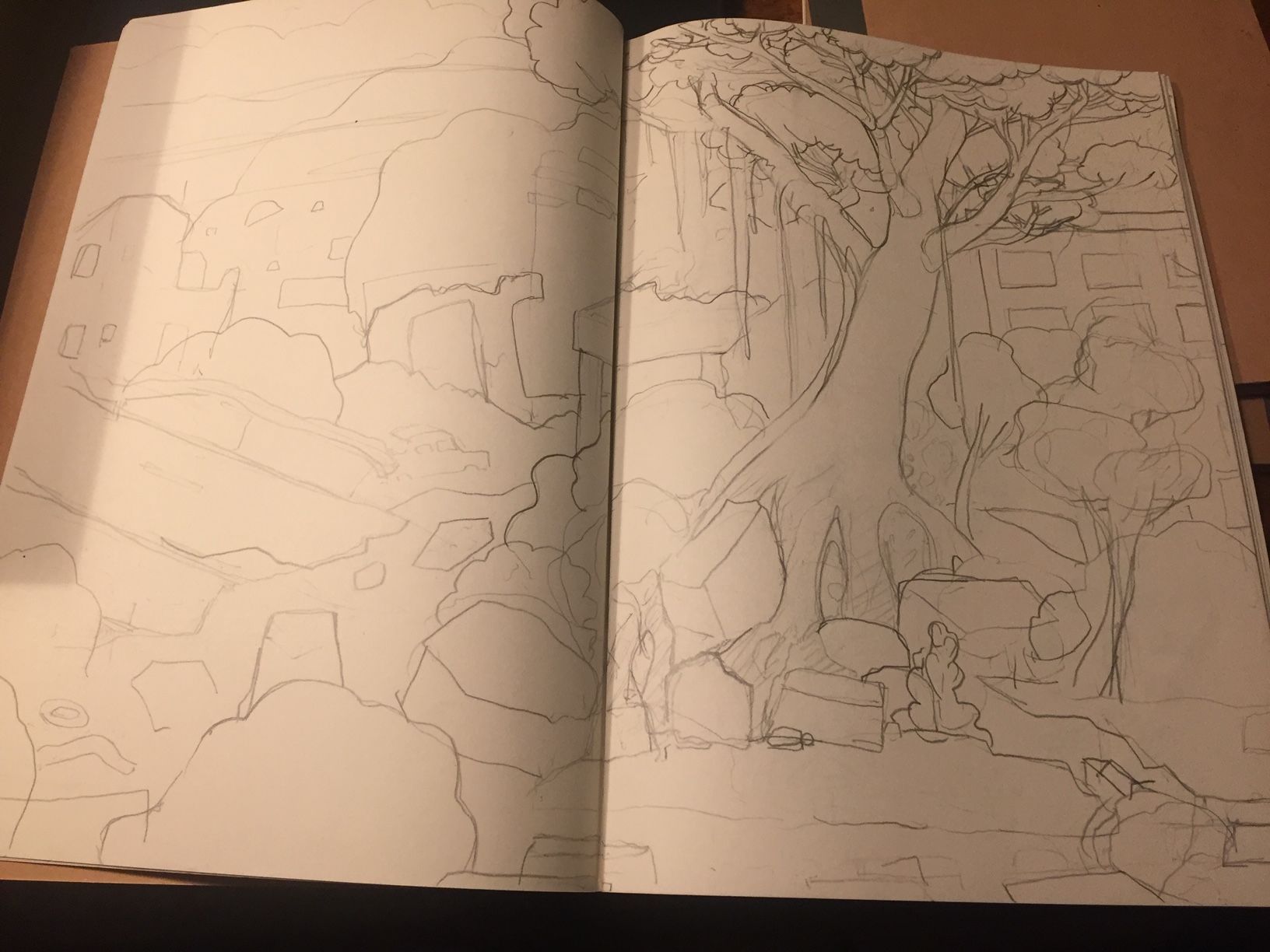
Writing for Games - Excerpt 1
So, as well as trying to steer the good ship Die Gute Fabrik, over the past year or so, CEO and Creative Director Hannah Nicklin (who also was the writer and narrative designer on Mutazione) has been writing a book designed to help people learn more about writing for games. We wanted to use the blog to share a series of extracts for the book, as a resource, and so you can find out if this is a book that you might find interesting or useful.
As part of this series of extracts, we're also excited to offer this special discount code: JML20 - use it to get 20% off the book at launch, pre-order or buy the book now!
About the Book
Writing for Games: Theory & Practice is an approachable and entry-level text for anyone interested in the craft of writing for videogames - and specifically focuses on writing, not narrative design or environmental storytelling. The book is aimed at both game design students and writers interested in games writing as a practice, and aims to provide anyone interested in becoming a better writer in the context of videogames.
It's broken into three parts: Theory considers the craft of both games and writing from a theoretical perspective, covering vocabulary for both game and story practices. Case Studies uses three case studies to explore the theory explored in Part One. And the Practical Workbook offers a series of provocations, tools and exercises aimed at giving the reader the means to refine and develop their writing, not just for now, but as a part of a life-long practice.
Today's Extract
This extract is chosen from the beginning of Part Three pp.183-186, where I begin to introduce a number of practical exercises for STARTING. Tools for beginning. It's a simple starting technique I call 'seeds'. Professional writers rarely have time to sit around waiting to be inspired, part of working as a writer is building a toolkit to help you on the days your mind is empty.
Tools for Starting
Everyone starts to formulate a story in different ways. Some with a world; some with characters; some with a theme, feeling, or question. If you’re brought in halfway through a game dev process (highly likely) you may already have the key player verbs, genre, and world chosen for you, and have to shape the story around those affordances. In that case then, instead of just using these tools for ‘starting’ something, consider that they might also be useful tools for you to develop and understand what might be missing from your brief as started by someone else.
But for ease we’re just going to call these ‘tools for starting’, in this section I'll offer the following tools for starting:
- Seeds (characters, world, or story),
- Form-driven design – cultivating soil for your seeds
- Character
- Other character techniques
- World sheets
- Applied story: story-driven puzzle design
- Brief setting
I tend to have a quite form-based practice. So, I’m also going to remind you of other approaches that I’ve noted before. If this stuff doesn’t suit you, take a look at
- Lynda Barry’s What It Is (for very visual people)
- Michael Atavar’s How to Be an Artist (very similar to me, but more of it, really)
- Julia Cameron’s The Artist’s Way (more spiritual, freer and instinct-driven practice)

Seeds
What if you have no idea at all? You’re in the remarkable and once-in-a-career position of being given carte blanche to do what you want. Some storytellers are full of ideas and just need support in developing them. But many people struggle with the empty page; that’s where defining your seed strategy can come in handy.
‘Seeds’ are the tiny ideas, words, concepts, or strategies which get your creative cogs turning. What works best will be personal to you and the way your brain works. You may even already have seed strategies but not know about them. Here are a number of seed strategies that I know of:
- Collage making – Cut, stick, and build from a collection of magazines to make characters, places, or worlds.
- Redacted. Blacking out lines and words in a newspaper, magazine, or book until you have a fun line of dialogue or story.
- ‘Like X but Y’ – Smashing together existing stories/genres/locations/characters. ‘Like When Harry Met Sally, but queer, and set in the Italian anti-fascist punk scene’. Make yourself a Frankenstein monster of a story. Transpose characters. Steal with abandon. Change names and details until it’s something new.
- Images, scraps, and moments in your notes app – Encouraging yourself to note down every time your brain amuses itself with a line, memory, image, etc.
- Julia Cameron’s Morning Pages (Cameron, 2016) or other stream of consciousness techniques – Let your preoccupations rise to the surface. Wake up, put pen to paper, and just write, write about whatever, if you can’t think what to write, write the word ‘and’ until you have something to say. Write to yourself, someone else, or something made up. If stuck on where to start, turn on the radio, or look on Twitter, or pick a line from a book by your bedside and write that as the title, then write from there. Set a timer for one, three, and five minutes, and see where you get each time. Collect them at the end of the week, and then look through them for cool lines, ideas, thoughts, images, or themes.
- Cuttings – Interesting stories from newspapers, screenshots of tweets, etc. kept in a scrapbook or folder on your computer; organise it how you like.
- Create a biscuit tin or book of scraps – Whether images, words, themes, and pull them out until you feel inspired.
- Exquisite corpse – Character seeds gathered from hundreds of photos, magazine cut-outs, and postcards. Go to charity shops and vintage shops and buy old postcards, photos, or read the inscriptions in books and base a character on them. Cut up a hundred heads, outfits, and backgrounds and pull them together until you meet someone you can hear the voice of, etc.
- Oblique Strategies – Brian Eno’s Oblique Strategies offer means of turning ideas on their head for when you feel stuck. You can print these on cards (or buy them preprinted) and pull one out as a seed for a new direction.
The idea is that you discover the best means for you of accelerating ideas for a story or game. Maybe it’s a scrapbook, maybe it’s your folder of interesting news stories, maybe it’s one of the aforementioned strategies adapted to your own needs.
It’s worth saying I don’t think I’ve ever – in my entire game writing career – been in the position of starting from scratch, but it is very useful as an exercise nevertheless, and it’s also useful sometimes if you’re stuck halfway through a story. Pull out a seed, strategy, or scrapbook, and let it guide your mind.
Here’s a list of word-based seeds that I print, cut out, and put in little tins to use in writing workshops. Sometimes I add to them, but there seems to be enough here that someone always finds something. It’s okay to pick a seed up, find it’s not for you, and put it back. I offer these as an example only. Depending on where you're from and who you're working with/who you are, you may wish to adjust the contents.
- The sea
- A sad fox
- An antique suitcase, locked
- Mermaids
- A bird that fell from the nest
- A religious medallion
- The Golden Gate Bridge
- Rooftops
- City parks
- An ancient ruin
- Your ‘go’ bag
- A run-down spaceship
- A game you used to play when you were a child
- The first song you hear when you turn on the radio
- A specific geometric shape
- A confession
- Commuters
- A busy badger
- A well-known book from your childhood
- Silly monsters
- Punching Nazis
- That day in nature
- Someone you loved
- Why can’t this fly?
- Seven bad mistakes

Exercise 1 (2 × 0 .5 days)
Pick a short form of creative writing you work with easily and instinctively, such as a one- page short story, two-page script, short poem, four-panel comic, one-page pitch for a longer work, etc. The idea is that it’s a format you don’t need to think too much about. You’re going to create many of these – at least five.
On the first half day: Pick three to five of the seed strategies listed earlier (and feel free to invent your own), try to make sure there’re some big variations (i.e. visual and written), and prepare a number of seeds for each strategy. Take your time with the prep. Spend some time gathering seeds thinking about what feels light, exciting, and sustainable for you.
On the second half day: Whatever short form of writing you’ve chosen, produce a plan or a quick draft of a new piece of writing using each of the seed techniques you’ve prepared. At least one new idea per seed strategy. Pick from seeds until you have an idea for a theme, character, poem, scene, or design proposal – whatever it is you’re working on. Develop them in ways that feel natural – make notes or draw sketches or whatever works.
It’s okay to use more time after the exercise to finish any pieces you enjoy, but this exercise is about starting. The point here is working out which techniques you like the most. Work quickly and messily. Don’t focus on the works; focus on what gets your brain moving most pleasantly - if nothing comes, that strategy isn't for you. Spend the end of your half day reflecting on what suited you best and why.
End of extract.
That discount code again
Remember, as part of this series of extracts, we're also excited to offer this special discount code: JML20 - use it to get 20% off the book at launch, pre-order or buy the book now!
